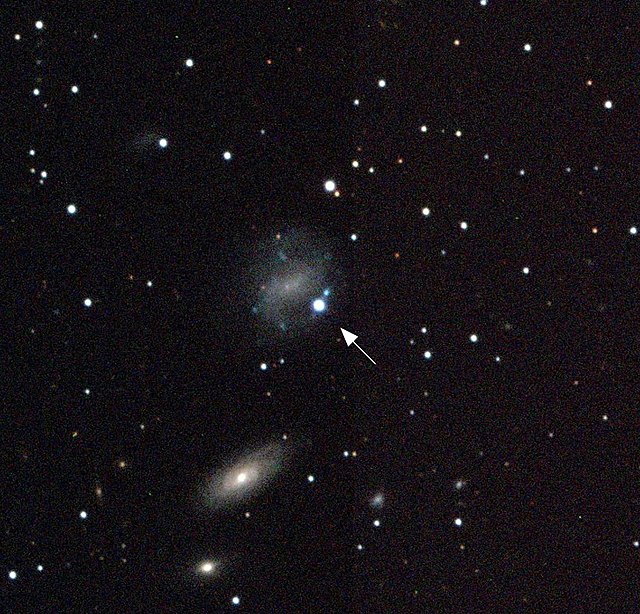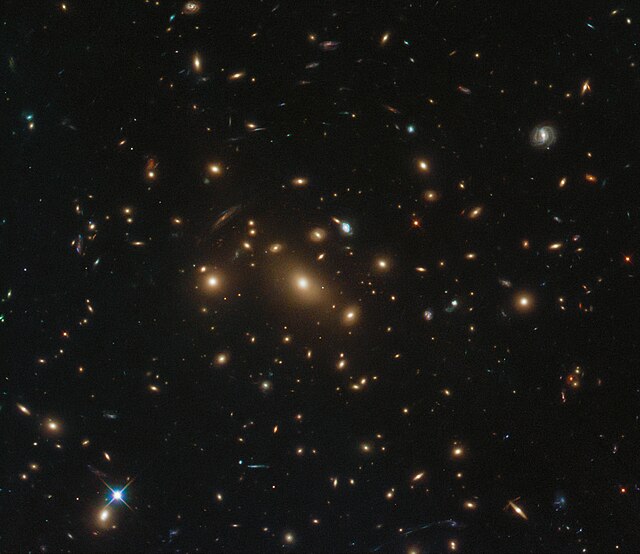A hypernova is a very energetic supernova which is believed to result from an extreme core-collapse scenario. In this case, a massive star collapses to form a rotating black hole emitting twin astrophysical jets and surrounded by an accretion disk. It is a type of stellar explosion that ejects material with an unusually high kinetic energy, an order of magnitude higher than most supernovae, with a luminosity at least 10 times greater. Hypernovae release so much of gamma rays they usually appear similar to a type Ic supernova, but with unusually broad spectral lines indicating an extremely high expansion velocity. Hypernovae are one of the mechanisms for producing long gamma ray bursts (GRBs), which range from 2 seconds to over a minute in duration. They have also been referred to as superluminous supernovae, though that classification also includes other types of extremely luminous stellar explosions that have different origins.

ESO image of hypernova SN 1998bw in a spiral arm of galaxy ESO 184-G82
A supernova is a powerful and luminous explosion of a star. A supernova occurs during the last evolutionary stages of a massive star, or when a white dwarf is triggered into runaway nuclear fusion. The original object, called the progenitor, either collapses to a neutron star or black hole, or is completely destroyed to form a diffuse nebula. The peak optical luminosity of a supernova can be comparable to that of an entire galaxy before fading over several weeks or months.
SN 1994D (bright spot on the lower left), a type Ia supernova within its host galaxy, NGC 4526
The Crab Nebula is a pulsar wind nebula associated with the 1054 supernova.
A 1414 text cites a 1055 report: since "the baleful star appeared, a full year has passed and until now its brilliance has not faded".
2015 supernova in galaxy cluster RXC J0949.8+1707. In 2011, two supernovae were observed in the same face-on spiral galaxy.





